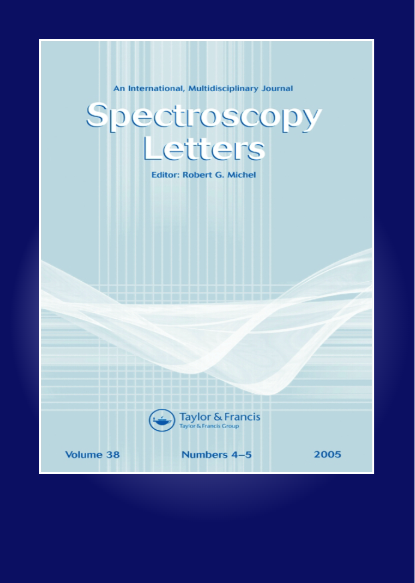基于稀土多金属氧酸盐的新型铜离子荧光探针
IF 1.1
4区 化学
Q3 SPECTROSCOPY
引用次数: 1
摘要
摘要利用K10H3[Eu(SiMo6W5O39)2]·28H2O建立了测定Cu(II)离子的新方法。多金属氧酸盐H4SiMo6W6O40作为配体使铕离子敏化以发射红色荧光,并且通过添加Cu(II)离子来猝灭荧光。由于Cu(II)对K10H3[Eu(SiMo6W5O39)2]·28H2O的内滤效应(IFE)和静态爆发,中心Eu3+的发光被猝灭。因此,K10H3[Eu(SiMo6W5O39)2]·28H2O可以用作Cu2+的特异性荧光探针,并且它对铜离子的线性响应范围从1到20 μM,检测限0.13 µM。该探针成功地应用于蛤蜊样品中Cu(II)离子的测定,回收率在90–98%之间。本文章由计算机程序翻译,如有差异,请以英文原文为准。
A novel fluorescent probe for copper (II) ion based on rare earth polyoxometalate
Abstract A new strategy for the determination of Cu(II) ions was developed using K10H3[Eu(SiMo6W5O39)2]·28H2O. The polyoxometalate H4SiMo6W6O40 acts as a ligand to sensitize the europium ion to emit red fluorescence, and the fluorescence was quenched by the addition of Cu(II) ions. The luminescence of the central Eu3+ was quenched due to the inner filter effect (IFE) of Cu(II) to K10H3[Eu(SiMo6W5O39)2]·28H2O and the static burst. Therefore, K10H3[Eu(SiMo6W5O39)2]·28H2O can be used as a specific fluorescent probe for Cu2+ and it exhibited a very good linear response range for copper ions from 1 to 20 μM with detection limit of 0.13 µM. The probe was successfully applied to the determination of Cu(II) ions in clam samples with recoveries in the range of 90–98%.
求助全文
通过发布文献求助,成功后即可免费获取论文全文。
去求助
来源期刊

Spectroscopy Letters
物理-光谱学
CiteScore
2.90
自引率
5.90%
发文量
50
审稿时长
1.3 months
期刊介绍:
Spectroscopy Letters provides vital coverage of all types of spectroscopy across all the disciplines where they are used—including novel work in fundamental spectroscopy, applications, diagnostics and instrumentation. The audience is intended to be all practicing spectroscopists across all scientific (and some engineering) disciplines, including: physics, chemistry, biology, instrumentation science, and pharmaceutical science.
 求助内容:
求助内容: 应助结果提醒方式:
应助结果提醒方式:


